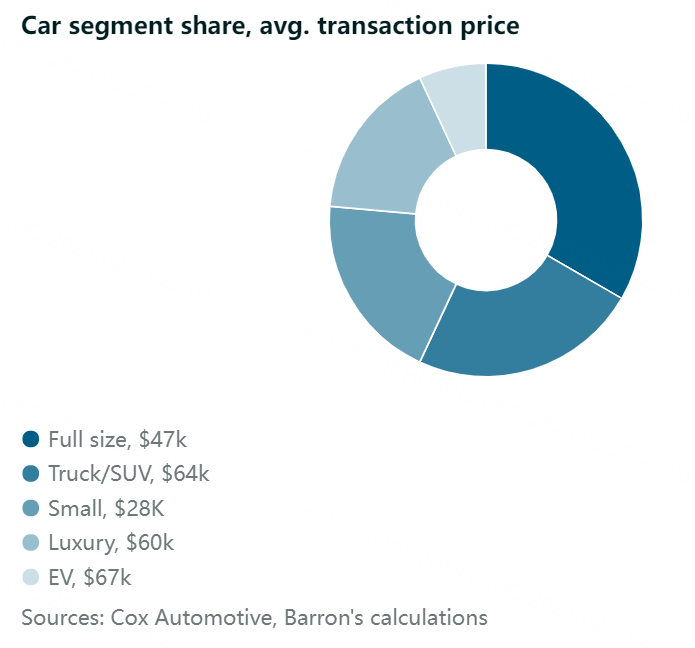Tesla needs a lower-priced car. And the sooner the better.
The electric-vehicle pioneer’s 2023 investor event is coming up on March 1. It’s a chance for investors to hear from CEO Elon Musk about the company’s strategy and future. This year, as EV competition ramps up, one issue looms larger than others.
“The most important issue for Tesla going into its analyst day is the status of its next-gen, lower-cost vehicle platform,” wrote Bernstein analyst Toni Sacconaghi in a Wednesday report. He says Tesla needs the lower-price EV to meet investors’ lofty growth expectations. “Our research has indicated that EV models that have generally struggled to increase volume beyond the third or fourth year of introduction.”
All of Tesla’s vehicles, except the Model Y, are more than four years old, and they qualify as higher-end cars. Today, a Model S starts at about $95,000, and Model X starts at about $110,000. A Model 3 starts at about $43,000, while a Model Y starts at about $55,000.
Tesla started producing the expensive Models S and X in 2012 and 2014, respectively. Tesla needed to start out with expensive, luxury cars because batteries cost a lot back then. Sales for the S and X peaked in 2018 at 116,076 units combined. Sales of those two models came in at 66,705 in 2022.
The Models 3 and Y—Tesla’s first mass-market vehicles—started shipping in 2017 and 2020, respectively. Total sales of both vehicles hit 1,247,146 in 2022, up 37% compared with 2021.
Tesla has shipped more than three million Model 3 and Y vehicles over time. That’s about six or seven times more than its Model S and X vehicles.
Wall Street expects Tesla to be shipping about 1.8 million Models 3 and Y in 2023 and 2.4 million of those two models in 2024, implying nearly 40% average annual growth for that platform. Sacconaghi, however, simply worries the cars might be too old to generate those kind of numbers.
“We struggle to see how Tesla can deliver a new volume offering prior to 2025,” added the analyst in his report. He rates shares Sell and has a $150 price target for the stock.
Tesla has discussed making a lower-price EV several times. Recently on the company’s fourth-quarter conference call, CFO Zachary Kirkhorn said the “next-generation vehicle platform” was a priority. Details about what the cost and timing of a next platform have been thin, though. Tesla didn’t immediately respond to a request for comment about the development of a lower-price EV.
A lower-price model would boost growth and open up more of the global car market to the EV leader. Roughly half of the cars sold in the U.S., excluding pickup trucks, cost less than $36,000. Today, Tesla doesn’t have a car that starts under $42,000.
(Although, with the federal government’s new $7,500 purchase tax credit that was passed as part of the Inflation Reduction Act, a base Model 3 starts at about $36,000.)
Tesla, of course, could also refresh the Model 3 and Model Y, making small changes and adding features. Such plans are something else investors should watch for on March 1. Tesla will also start delivering the Cybertruck in 2023, opening up the truck segment of the market to the company.
For now, investors don’t appear to be worried about the next car. Tesla stock has climbed about 60% so far this year, but shares are still down about 28% over the past 12 months. The S&P 500 and Nasdaq Composite down about 7% and 14%, respectively, over the past year.
A new lower-priced vehicle and a timeline for its production could be a positive fresh catalyst for Tesla stock next week. On the other hand, if the company doesn’t reveal a new low-price EV, that could mean the stock gives up some of its year-to-date gains.
Sacconaghi rates Tesla shares Sell, but overall, 65% of analysts covering the stock rate it at Buy. The average Buy-rating ratio for stocks in the S&P 500 is about 58%. The average analyst target price for Tesla is about $198 a share.

